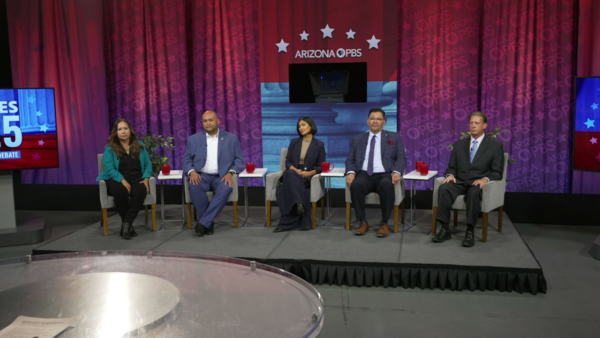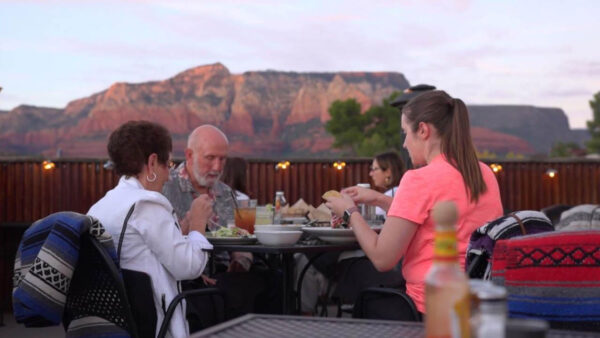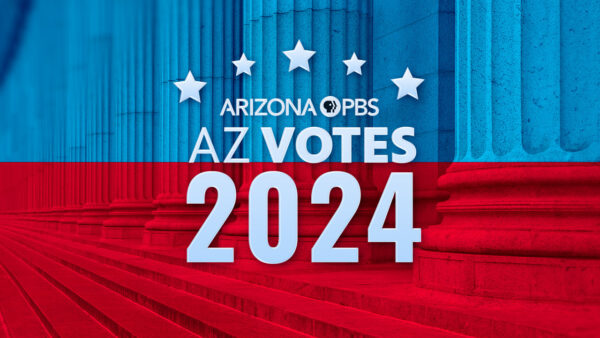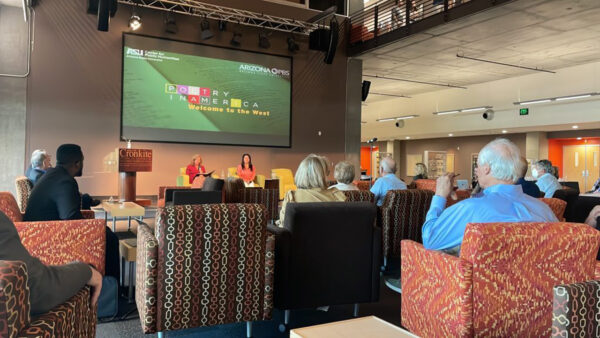American Experience “Roads to Memphis”
May 2, 2011
“I think at the heart of James Earl Ray is just the desire to say, ‘Somebody, look at me.
Somebody, know I exist.” — Wayne Flynt, Auburn University
A riveting crosscut narrative of a killer and his prey, Roads to Memphis is the fateful story of an assassin and his target set against the seething, turbulent forces in American society that drove two men to their violent and tragic collision on April 4, 1968. Following the inexorably converging paths of James Earl Ray and Dr. Martin Luther King Jr., Roads to Memphis is both an incisive portrait of an America on edge in that crisis-laden year and a cautionary tale of how the course of history can be forever altered by the actions of one individual.
Roads to Memphis is told through eyewitness testimony from King's inner circle and the officials involved in Ray's capture and prosecution following an intense two-month international manhunt. The first film to explore the mind of the elusive assassin, Roads to Memphis is produced and directed by Emmy Award-winning filmmaker Stephen Ives ( Seabiscuit, Kit Carson, Las Vegas). The two-hour documentary airs Monday, May 2, 2011 at 9 p.m. on Eight, Arizona PBS.
When James Earl Ray was arrested in July 1969, he was the most wanted suspect in the world. Who was this “four-time loser” who was able to assassinate Dr. Martin Luther King, the Nobel Prize-winning, charismatic leader of the civil rights movement? How did Ray manage to escape and elude authorities for months? What motivated him to kill? Roads to Memphis reveals a mysterious and misunderstood loner who remains an enigma even today.
The Escape Artist
In April 1967, James Earl Ray was serving time for armed robbery in Missouri State Penitentiary, known as Jeff City. Born into a troubled family scarred by violence, crime and extreme poverty, Ray had become a career criminal, eking out a living by holding up taxi drivers, grocery stores and office buildings. Inside Jeff City, many white prisoners, including Ray, were virulently racist, and word on the cell block circulated that a bounty had been placed on Martin Luther King, one of the most revered—and hated—men in America. During the seven years he spent in prison, Ray, a news junkie, followed King's growing popularity and power, nursing both his hatred of the civil rights leader and his gnawing desire to escape from prison.
Early one morning, Ray, who worked in the prison bakery, hid under a false bottom in a bread cart and managed to be loaded onto a delivery truck. When the truck rolled out of the prison and came to a stop, Ray jumped out and ran down the railroad tracks to freedom. “It's important to understand this was a maximum-security prison,” says Hampton Sides. “This is not an easy place to spring from. It shows something about Ray's personality. He's very patient and plans months ahead.”
Instead of being elated with his newfound freedom, Ray was soon disappointed that he didn't end up on the FBI's Most Wanted list. He wound up in Chicago, reuniting with his brothers and coming up with schemes to make a living, from pornography to kidnapping to getting that bounty on King's head.
King's Ascendancy and Gathering Clouds of Opposition
“I would willingly give my life for that which I think is right and I am convinced that when one does this honestly, death can become redemptive.” — Dr. Martin Luther King, Jr.
Meanwhile, on the outside, King had risen to the height of his popularity, winning the Nobel Peace Prize, and drawing huge crowds to his appearances and speeches. “The country was going through this spasm of democracy,” says Gerald Posner. “People were getting civil rights acts passed and they were marching on Washington. Many whites viewed this as a threat to the America they knew.”
“Martin Luther King saw non-violence and politics as drama,” says Harris Wofford, Assistant to President Kennedy. “You first stir a crisis in the minds of the people you are trying to reach. You sort of awaken their minds by a little shock treatment. When you peacefully turn the other cheek you're using virtue against them. You know that you're going to stir hatred, but King thought there had to be times when you almost deliberately invite death.”
While King consolidated his power and influence, Ray restlessly drifted, from Chicago to Canada to Birmingham to Mexico to Los Angeles, always fading into the background. It was in Los Angeles that he became captivated by former Alabama governor George Wallace's run for the presidency. A reaction against the growing civil rights movement, Wallace's campaign appealed to many poor, white Southerners. Says Arthur Hanes: “In those days, white men had pride in their race because frequently that's the only thing they could have pride in. The Rays may have had absolutely nothing, but in those days and times, at least they could say they were white.”
A Left Turn to Memphis
“I think that America was ready to have a nervous breakdown.”
– Roger Wilkins , assistant attorney general in the Johnson administration
As 1967 drew to a close, Dr. King's emphasis on civil rights broadened to reflect his belief that real change could only come about with broad social transformation, a controversial position which many saw as a socialistic redistribution of wealth. Riots had devastated several major American cities, and King believed they were the result of multi-generational poverty, which had to be dealt with if any real change was to occur. He began to organize the “Poor People's Campaign,” a huge march on Washington that would demand that the government do something about poverty.
King's call to Washington further inflamed his enemies, including FBI Director J. Edgar Hoover, who had long despised King and launched a secret campaign to discredit and destroy him. He publicly called King “a liar,” further inflaming those who hated him. On March 16, 1968, King gave a speech in Los Angeles, only a few miles from where Ray was holed up. The next day, Ray took off and moved to Atlanta, King's hometown.
That same month, thousands of Memphis sanitation workers, almost exclusively African-American, struck for better pay and union recognition after two garbage workers were killed in a malfunctioning compaction truck. Their plight touched King, who decided to join them, despite the protests of staff who felt that the Memphis strike was a distraction from their larger mission. But, as author Sides says, “What was happening in Memphis really lured him in. It was the perfect expression of what he was trying to do in Washington. And King realizes that instead of taking a right turn to Washington, he first had to take a left turn to Memphis.”
Led by King, the march in Memphis on March 28, 1968, turned violent. Quickly whisked away to avoid being hurt, King was criticized for leaving the scene. He vowed to return against the advice of his aides.
“The question is not if I stop to help this man in need, what will happen to me. The question is if I do no t stop to help the sanitation worker, what will happen to them?” – Dr. Martin Luther King, Jr.
A date was announced for King's return to Memphis, allowing Ray to spring into action. An Army veteran, he went to Birmingham and, under an assumed name, bought the right weapon for the job in mind: a ‘thirty-aught-six' Remington rifle with a scope. His path was set.
On April 3 rd , King and his colleagues, including Dorothy Cotton, Andrew Young, and Benjamin Hooks, returned to Memphis, aware of the increasing tensions but determined to show solidarity with the sanitation workers. Says Hooks: “He didn't think it made any sense to be scared all the time and he wasn't. He would not let any of his staff that traveled with him carry a pistol or a rifle or a blackjack. He did not want anybody to have any weapon of force or retaliation because it violated his principle of nonviolence. That was his way of life. Not a theory, a way of life.” Ray, too, went to Memphis, checking into the New Rebel motel.
On the night of April 3 rd , during a violent storm, King spoke from his heart to the crowd at the Mason Temple, giving one of the most powerful and memorable speeches of his life.
“Well, I don't know what will happen now. We've got some difficult days ahead. But it doesn't really matter with me now, because I've been to the mountaintop. And I don't mind. Like anybody, I would like to live a long life. Longevity has its place. But I'm not concerned about that now. I just want to do God's will. And He's allowed me to go up to the mountain. And I've looked over. And I've seen the Promised Land. I may not get there with you. But I want you to know tonight that we, as a people, will get to the Promised Land.”
The next day, Ray found a rooming house near the Lorraine Motel, identified as King's lodging by the Memphis media. On the evening of April 4 th , as King and his aides prepared to go to dinner, Ray, an expert marksman, shot and killed King as he stood on the motel balcony.
The Manhunt and the Aftermath
“ To some extent Dr. King has been a buffer for the last few years between the white community and the black community. The white people do not know it, but the white people's best friend is dead.” — Jesse Jackson
The assassination of Dr. Martin Luther King Jr. shook the country to the core, setting off deadly riots from coast to coast, and triggering the largest, costliest and most ambitious manhunt in American history to date. Ironically, Hoover, who had tried to ruin and discredit King, knew he had to break the case as quickly as possible, lest the reputation of his beloved FBI be tarnished.
Because of his history as a drifter and use of aliases both before and after the murder, Ray's identity remained unknown for more than two weeks. He escaped to Canada and planned to end up in Rhodesia, where he expected he would be hailed a hero. Finally FBI agents got lucky and matched fingerprints found on the gun to an escaped felon named James Earl Ray. Almost two months later, Ray was arrested in London and returned to Memphis.
On March 10, 1969, Ray pled guilty to killing King and was sentenced to 99 years in prison. Three days later, he recanted his plea. He spent the rest of his life declaring his innocence until he died behind bars in April 1998, nearly thirty years to the day after the murder.
“As fate, destiny dictated, Dr. King and Ray will be forever paired. As unfair and as maddening as that can be. You say, ‘James Earl Ray shouldn't even be mentioned in the same breath as Dr. King.' But so it is.”
—Dan Rather, CBS reporter at the time of the King assassination
“We always said we were not concerned with who killed Martin Luther King. We were concerned with what killed Martin Luther King and what killed Martin Luther King was a reactionary attitude that was afraid of change for the better in America. I learned from Martin Luther King that you have to do what you think is right and accept the consequences as they come.” – Andrew Young
About the Participants, in Order of Appearance
Dan Rather was a reporter for CBS when he reported on the King assassination.
John Campbell was a Shelby County Assistant District Attorney in Memphis.
Gerald Posner is the author of ten best-selling books including, Killing the Dream , about the King assassination.
Harris Wofford is a former Democratic U.S. Senator from Pennsylvania who served as an attorney for the United States Commission on Civil Rights from 1954-1958 and was also chairman of the Subcabinet Group on Civil Rights.
Joe Sweat is a former reporter for the Memphis Commercial Appeal.
Rev. Samuel “Billy” Kyles is a Memphis civil rights leader and preacher who worked with Dr. Martin Luther King in supporting the sanitation workers strike and witnessed his assassination.
Roger Wilkins is currently the Clarence J. Robinson Professor of History and American Culture at George Mason University. Wilkins served as assistant attorney general in the Johnson administration.
Hampton Sides , a Memphis native, is an award-winning editor of Outside and the author of the bestselling histories Blood and Thunder and Ghost Soldiers. Sides' latest book is, Hellhound on His Trail: The Stalking of Martin Luther King, Jr. and the International Hunt for His Assassin (Doubleday, April 2010).
Wayne Flynt is a Professor of History at Auburn University and the author of Dixie's Forgotten People: The South's Poor Whites.
Arthur Hanes was James Earl Ray's first attorney, later replaced by Percy Foreman.
Dorothy Cotton was the Education Director for the Southern Christian Leadership Conference for twelve years under the direct supervision of Dr. Martin Luther King, Jr.
In 1968, Andrew Young was the Executive Director of the Southern Christian Leadership Conference (SCLC) and one of Dr. King's principal lieutenants. He was with King when he was assassinated .
Benjamin Hooks is a Memphis-bred Civil Rights leader, Baptist minister and attorney and was a close friend of Dr. King.
Elmore Nickelberry and Leslie Moore were Memphis sanitation workers who marched with Dr. King.
Maxine Smith led the Memphis chapter of the NAACP from 1962 until 1996.
B. Venson Hughes is a retired officer of the Memphis Police Department.
Ramsey Clark was Attorney General of the United States in 1968.
)






















